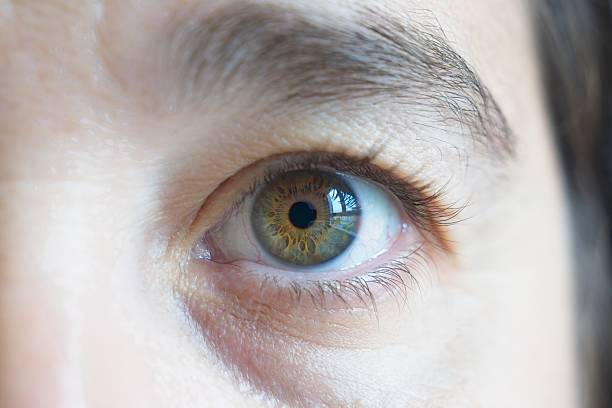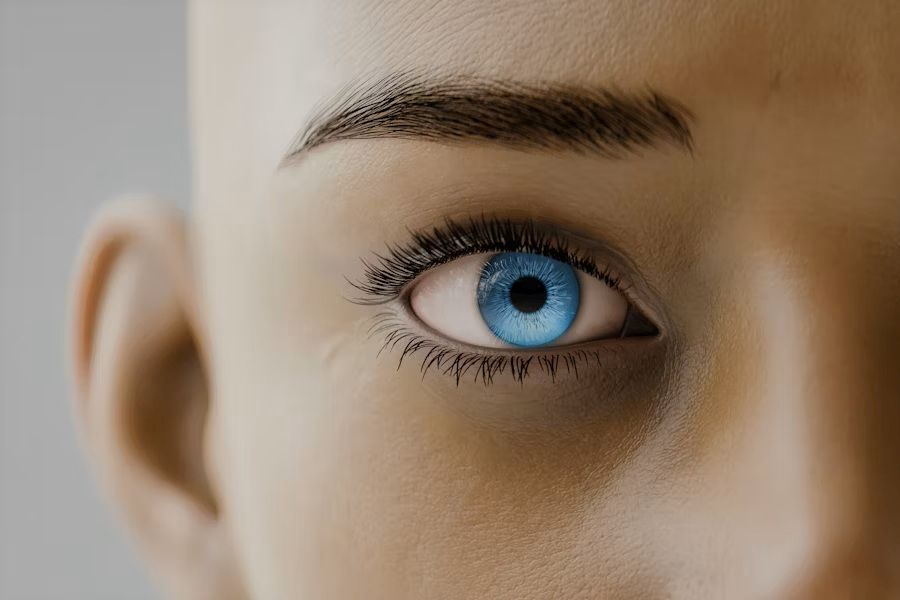Your Cart is Empty
Unveiling the Mystery: Why Your Eye Color May Not Stay the Same

Have you ever looked in the mirror and wondered if your eyes seem a different shade than usual? You're not alone. Many people experience subtle or even dramatic changes in their eye color throughout their lives. This fascinating phenomenon has puzzled scientists and intrigued individuals for centuries. In this comprehensive guide, we'll explore the various factors that can influence eye color changes, debunk common myths, and delve into the science behind this captivating aspect of human biology.
Table of Contents
-
Understanding Eye Color Basics
-
Factors Influencing Eye Color Changes
-
Age-Related Eye Color Changes
-
Medical Conditions Affecting Eye Color
-
Medications and Eye Color Alterations
-
Environmental Factors and Eye Color Shifts
-
Emotional States and Temporary Eye Color Changes
-
Myth vs. Reality: Debunking Eye Color Change Misconceptions
-
Genetic Factors in Eye Color Variation
-
The Role of Melanin in Eye Color
-
Heterochromia: When Eyes Have Different Colors
-
Predicting and Preventing Eye Color Changes
Understanding Eye Color Basics
Before we dive into the reasons behind eye color changes, it's essential to understand the basics of how eye color is determined. The color of our eyes is primarily influenced by the pigmentation of the iris, the circular structure surrounding the pupil. The iris contains specialized cells called melanocytes, which produce melanin – the same pigment responsible for skin and hair color.
The amount and type of melanin in the iris determine the eye color we see. Generally, more melanin results in darker eye colors, while less melanin leads to lighter shades. However, the process is more complex than a simple light-dark spectrum. The distribution and concentration of melanin, as well as the structure of the iris itself, all play roles in creating the wide variety of eye colors we observe in humans.
It's important to note that what we perceive as eye color is actually a result of how light interacts with the iris. This interaction can be affected by various factors, which is why our eye color may appear to change under different circumstances.
Factors Influencing Eye Color Changes
Eye color is not as static as we once believed. Several factors can contribute to changes in eye color, both temporary and permanent. These include:
-
Age
-
Medical conditions
-
Medications
-
Environmental factors
-
Emotional states
-
Genetic influences
Understanding these factors can help explain why your eye color might not stay the same throughout your life. Let's explore each of these in more detail.
Age-Related Eye Color Changes
One of the most common reasons for eye color changes is aging. This process is particularly noticeable in infants and young children but can continue well into adulthood. Let's examine how eye color can change with age:
Newborns and Infants
Most Caucasian babies are born with blue or gray eyes. This is because melanin production hasn't fully kicked in yet. As the baby grows and is exposed to light, melanocytes in the iris begin to produce melanin. This process can cause the eye color to darken or change completely over the first few months or years of life.
Childhood and Adolescence
Eye color typically stabilizes by age 3-6, but changes can continue through childhood and even into the teenage years. Some children may experience gradual shifts in eye color as they grow, often resulting in darker shades.
Adulthood and Senior Years
Contrary to popular belief, eye color changes don't stop in adulthood. Many adults report subtle changes in their eye color as they age. This is often due to the thinning of the iris, which can make eyes appear lighter. Additionally, the development of certain eye conditions in older age can affect perceived eye color.
It's fascinating to note that these age-related changes can sometimes be quite dramatic. For example, some people with dark brown eyes in their youth may find their eyes appearing almost hazel or amber as they enter their senior years.
Medical Conditions Affecting Eye Color
Several medical conditions can cause changes in eye color. While some of these changes may be temporary, others can be permanent. Here are some conditions that can affect eye color:
Horner's Syndrome
This rare condition affects the nerves that control the eyes and face. One of its symptoms is heterochromia, where one eye may appear lighter than the other due to a lack of pigmentation.
Pigmentary Glaucoma
This form of glaucoma can cause pigment to be released from the iris, potentially changing the eye color. It often results in a darker appearance of the affected eye.
Fuchs Heterochromic Iridocyclitis
This inflammatory condition can cause one eye to gradually change color over time, usually becoming lighter.
Uveitis
Inflammation of the uvea (the middle layer of the eye) can sometimes lead to changes in eye color, often making the affected eye appear darker.
Iris Nevus
This benign growth on the iris can cause a localized change in eye color, appearing as a darker spot or patch.
It's crucial to note that any sudden or unexplained change in eye color should be evaluated by an eye care professional, as it could be a sign of an underlying medical condition.
Medications and Eye Color Alterations
Certain medications can cause changes in eye color as a side effect. While this is relatively rare, it's important to be aware of the possibility. Some medications known to potentially affect eye color include:
-
Prostaglandin Analogs: These medications, used to treat glaucoma, can cause the iris to darken over time. The change is usually permanent and more noticeable in people with lighter-colored eyes.
-
Latisse: This medication, used to enhance eyelash growth, contains a prostaglandin analog and can potentially darken eye color.
-
Certain Anticonvulsants: Some medications used to treat seizures have been reported to lighten eye color in rare cases.
-
Steroids: Long-term use of steroid eye drops may cause lightening of the iris in some cases.
It's important to discuss potential side effects with your healthcare provider when starting any new medication. If you notice changes in your eye color after beginning a new treatment, consult your doctor.
Environmental Factors and Eye Color Shifts
While our genes primarily determine our eye color, environmental factors can influence how our eyes appear. These factors can cause temporary or even long-term changes in perceived eye color:
Lighting Conditions
The amount and type of light can significantly affect how our eye color appears. Natural daylight often reveals the most accurate eye color, while artificial lighting can alter the perception. For example, fluorescent lights might make blue eyes appear more gray, while warm incandescent lighting can bring out golden tones in brown eyes.
Pupil Dilation
When our pupils dilate (get larger) in low light conditions, less of the iris is visible, which can make the eyes appear darker. Conversely, in bright light when pupils constrict, more of the iris is exposed, potentially making the eyes look lighter.
Clothing and Makeup
The colors we wear, especially near our face, can influence how our eye color is perceived. For instance, wearing a blue shirt might make blue eyes appear more vibrant. Similarly, certain eyeshadow colors can enhance or alter the appearance of eye color.
Seasonal Changes
Some people report that their eyes seem to change color slightly with the seasons. This could be due to varying light conditions or even hormonal changes associated with seasonal shifts.
Nutrition and Hydration
While diet doesn't directly change eye color, proper nutrition and hydration can affect the clarity and brightness of the eyes, which might influence how the color is perceived.
Understanding these environmental factors can help explain why your eyes might seem to change color in different situations or even from day to day.
Emotional States and Temporary Eye Color Changes
You may have heard people say that someone's eyes changed color when they were angry or excited. While emotions don't actually alter eye color, they can influence how our eyes appear. Here's how:
Pupil Dilation
Strong emotions can cause our pupils to dilate, which, as mentioned earlier, can make the eyes appear darker. This is why people often say their partner's eyes look darker when they're feeling romantic or passionate.
Blood Flow
Intense emotions can increase blood flow to the face and eyes. This increased circulation can cause the whites of the eyes (sclera) to appear more reddish, which might affect the perceived color of the iris.
Tears
Crying can temporarily change how light reflects off the eye, potentially altering the perceived color. The moisture can create a glossy effect that might make the eyes appear brighter or more vivid.
Stress and Fatigue
Prolonged stress or lack of sleep can lead to dilation of blood vessels in and around the eyes, potentially affecting how eye color is perceived.
While these changes are temporary and don't actually alter the pigmentation of the iris, they demonstrate how our emotional states can influence our appearance, including our eye color.
Myth vs. Reality: Debunking Eye Color Change Misconceptions
There are many myths and misconceptions surrounding eye color changes. Let's separate fact from fiction:
Myth: You can permanently change your eye color through diet
Reality: While nutrition is important for overall eye health, no specific food or diet can permanently change your eye color. The pigmentation of your iris is primarily determined by genetics.
Myth: Staring at the sun can lighten your eye color
Reality: This is not only false but also extremely dangerous. Staring at the sun can cause severe and permanent damage to your eyes.
Myth: Eye color changes are always a sign of a serious medical condition
Reality: While sudden changes in eye color can sometimes indicate a medical issue, many eye color changes are natural and harmless, especially those that occur gradually over time.
Myth: Only babies' eyes change color
Reality: While it's true that significant eye color changes are most common in infancy, subtle changes can continue throughout life, especially in response to aging.
Myth: Brown eyes can turn blue naturally
Reality: While eyes can lighten somewhat with age, a dramatic change from brown to blue is not naturally possible. However, there are surgical procedures that can alter eye color, though these come with significant risks.
Understanding these myths can help you better interpret any changes you might notice in your own eye color and know when to seek medical advice.
Genetic Factors in Eye Color Variation
The genetic basis of eye color is complex and not fully understood. However, we do know that multiple genes play a role in determining eye color. The two main genes involved are:
-
OCA2: This gene provides instructions for producing the P protein, which is involved in the production and processing of melanin.
-
HERC2: This gene regulates the expression of OCA2.
Variations in these genes, along with several others, contribute to the wide range of eye colors we see in humans. Interestingly, genetic studies have shown that it's possible for two blue-eyed parents to have a brown-eyed child, or for two brown-eyed parents to have a blue-eyed child, although these scenarios are less common.
Recent research has also identified genes associated with green eyes and hazel eyes, further complicating our understanding of eye color genetics. This complexity explains why eye color can sometimes seem to change or why siblings can have dramatically different eye colors.
The Role of Melanin in Eye Color
Melanin is the key player in determining eye color. There are two types of melanin found in the iris:
-
Eumelanin: This is responsible for brown and black pigmentation.
-
Pheomelanin: This produces red and yellow hues.
The amount and proportion of these two types of melanin, along with how they are distributed in the iris, determine the resulting eye color. Here's a general breakdown:
-
Brown Eyes: High levels of eumelanin
-
Blue Eyes: Little to no melanin, with light scattering in the stroma of the iris creating the blue appearance
-
Green Eyes: A combination of light scattering and some melanin
-
Hazel Eyes: Varying amounts of both types of melanin, often distributed unevenly
Changes in melanin production or distribution can lead to changes in eye color. This is why some people experience eye color changes as they age or in response to certain medical conditions or medications.
Heterochromia: When Eyes Have Different Colors
Heterochromia is a fascinating condition where a person has two different colored eyes, or where one eye has multiple colors. There are three main types of heterochromia:
-
Complete Heterochromia: Each eye is a completely different color.
-
Partial Heterochromia: Part of one iris is a different color from the rest of it.
-
Central Heterochromia: The inner ring of the iris is a different color than the outer ring.
Heterochromia can be present from birth (congenital) or develop later in life (acquired). Congenital heterochromia is usually harmless and simply a result of genetic variation. Acquired heterochromia, on the other hand, can sometimes be a sign of an underlying medical condition and should be evaluated by an eye care professional.
Some famous individuals with heterochromia include actors Kate Bosworth and Mila Kunis, adding to the allure and uniqueness of this condition.
Predicting and Preventing Eye Color Changes
While many eye color changes are natural and harmless, there are steps you can take to maintain healthy eyes and potentially prevent unwanted changes:
-
Protect Your Eyes: Wear sunglasses to shield your eyes from UV rays, which can potentially affect iris pigmentation over time.
-
Regular Eye Exams: Regular check-ups can catch any potential issues early, including those that might affect eye color.
-
Be Aware of Medication Side Effects: If you're prescribed a medication known to affect eye color, discuss the potential risks and benefits with your doctor.
-
Maintain Overall Health: A healthy lifestyle supports eye health. This includes a balanced diet, regular exercise, and avoiding smoking.
-
Monitor Changes: Keep an eye on any changes in your eye color and report significant or sudden changes to your eye care professional.
-
Eye Photography: By turning your iris into art, printed on canvas or as a poster, you can freeze a moment in time and keep your original eye color alive in a stunning, personalized piece of artwork. This not only creates a visual keepsake but also helps monitor any changes as the years go by.
While we can't predict or prevent all eye color changes, being proactive about eye health can help maintain the clarity and vibrancy of your eyes throughout your life.
In conclusion, the mystery of changing eye color is a complex interplay of genetics, age, health, and environmental factors. While some changes are natural and harmless, others may signal underlying health issues. By understanding the factors that influence eye color, we can better appreciate the uniqueness of our own eyes and know when to seek professional advice. Remember, your eyes are not just the windows to your soul – they're also a fascinating reflection of your overall health and genetic heritage.
Leave a comment
Comments will be approved before showing up.




